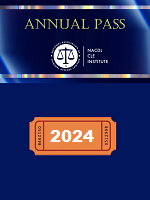Access to The Champion archive is one of many exclusive member benefits. It’s normally restricted to just NACDL members. However, this content, and others like it, is available to everyone in order to educate the public on why criminal justice reform is a necessity.
In a 2014 study, Written in Black & White: Exploring Confirmation Bias in Racialized Perceptions of Writing Skills, researchers devised a study using a legal memo, with several errors purposely inserted, written by a hypothetical third-year associate.1 Of the 60 law firm partners participating in the study, half were told the associate was Caucasian and half were told he was African American. The memo written by the imagined African American associate received an average score of 3.2 out of a possible 5.0. The same memo written by the hypothetical Caucasian associate scored an average of 4.1. Across all error categories — spelling, grammar, technical writing, and facts — the partners identified more mistakes in the writing of the African American associate.
In a column earlier this year, I wrote about how racial bias in the criminal justice system perpetuates disparities in everything from traffic stops2 to plea deals.3 All but forgotten in the national conversation about race and the law, however, is how disparities also permeate the most lucrative sectors of the profession. From the halls of “elite” law schools to partnerships at large firms, access to corridors of wealth and power has proven elusive for African Americans.
That is not for a lack of trying by African Americans. Between 1993 and 2011, the percentage of diverse associates at law firms grew from 8.36 percent to 19.9 percent.4 Diversity committees and affinity groups are commonplace at law firms of all sizes. A few recent statistics show that diversity is at least receiving cursory attention:
- Nearly 97 percent of midsize New York firms have diversity committees or councils.
- The same percent of midsize firms have a dedicated diversity budget.
- Nearly 94 percent of midsize New York firms have affinity groups.
- Eighty-four percent of firms have diversity mentorship programs.5
Large law firms show a similar commitment. In a 2014 survey of managing partners from the 100 largest firms in the United States and the general counsel of Fortune 100 companies, the importance of diversity was a common refrain. Interviews from leadership at Arnold & Porter LLP, Dentons, White & Case LLP, David Polk & Wardwell LLP, Paul Hastings LLP, Ropes & Gray LLP, Sidley Austin LLP, etc., all yielded the same results:
- Diversity was a core value or part of the firm’s identity.
- Diversity was critical to the firm’s economic success.
- “Diversity is a way to get the best people and the best decision-making.”
- “Diversity is inherent in what we do and who we represent.”6
Firms cite a broad array of initiatives, efforts, and policies to improve diversity. At the recruiting stage, firms are expanding recruitment to more law schools and focusing less on transcripts and more on other markers of ability. After attorneys of color are on board, best practices call for them to be carefully matched with mentors and managers to ensure they are receiving quality work assignments. Those assignments are supposed to expose them to challenging work and offer paths to advancement. When it comes time to review performance, firms are supposed to calibrate their review process to incorporate objective or quantifiable measures.7 Some firms have gone so far as to institute a blind pool both for work assignments and for evaluations, and then analyze any consistent discrepancies between anonymous and identified evaluations for attorneys of color.8
Yet, despite these professed measures, and the industry wide attention devoted to diversity, African American presence at large firms has regressed. Between 2011 and 2017, associate of color representation in firms rose from 19.53 percent to 23.32 percent.9 Most of this marginal increase can be attributed to a rise in Asian and Hispanic associates. The number of African American associates, conversely, has dropped each year from 2010 to 2015. The 2017 percentage at 4.28 percent remains below the percentage in 2009.10 Figures for African American partners are considerably worse. The 2017 percentage of African American partners at law firms (1.83 percent) is woeful and barely higher than the number in 2009 (1.71 percent).11
What is behind this lack of progress? The convenient answer is the recession and its effect on the legal industry. Between September 2008 and September 2009, attorneys of color accounted for 22 percent of firm layoffs (the percentage of African American attorneys dropped by 13 percent), though they accounted for under 14 percent of the total lawyers employed.12 It is the second number — the 14 percent — that underscores the much deeper problem. For all the rhetoric and initiatives surrounding diversity, “Big Law” has little to show for it.
Another wing of large law firm leadership is placing the blame on the failures of the academy. Without a reasonably sized pool of diverse graduates, the argument goes, law firms cannot be expected to make marked improvements in their own ranks. Law school rates, however, have been a “relative” bright spot amid the overall industry shortcomings. Enrollment diversity has consistently exceeded 20 percent and recently rose above 30 percent.13 Of that group, African Americans represented nearly nine percent of law students in 2016.14 With African Americans making up 13 percent of the U.S. population as a whole, law schools have a cognizable argument that they are doing better than most.
A closer look at the distribution of African American law students, however, raises the question of whether law schools are entirely blameless. In Diversity as a Law School Survival Strategy, Aaron Taylor analyzed a cross section of law school enrollment at several points over the past decade, a period marked by both pronounced highs and lows in law school figures.15 In 2010, for example, law school enrollment was at an all-time high. Just three years later, in 2013, numbers dropped precipitously to their lowest point since 1977.16 But the decline was not shouldered among law schools equally. Across quintiles based on median LSAT scores, the first quintile saw enrollment drop by 11.6 percent, whereas the fifth quintile saw a drop by 29.2 percent.17 While raw numbers of diverse students declined in each quintile, in the fifth quintile, raw and proportional numbers for African Americans actually increased.18 Furthermore, African American enrollment far outpaced the overall drop in enrollment in the fourth and fifth quintiles, suggesting what Taylor describes as a “deliberate strategy” on behalf of lower tiered schools to supplement declining enrollment with more African American and Hispanic students.19 In this light, the steady to modest increase in the numbers of diverse law school students looks less like a noble effort on behalf of the academy to improve diversity and more like a calculated effort at triage in a time of crisis.
Thus, neither rectifying historic patterns of racism nor a newfound progressivism is behind lower tiered law schools reluctantly opening their doors to a more diverse pool of applicants. The answer is much more likely one of self-preservation. The schools that were contemplating additional cohorts in 2010 were the very same programs competing for 25 percent fewer applicants in 2013. In this drastically different landscape, an industry driven by status and ranking became even more so. Much of law school decision-making rests on two criteria: LSAT score and undergraduate GPA. Amid the keen competition of 2013, average LSAT scores for admitted students decreased at all but a handful of schools. High demand for admission to top programs allowed those schools to weather the worst of the storm. The cumulative effects of the correction alluded to above, however, tended to trickle down to the lower tiers.20 In a refrain not dissimilar to that of law firm leadership, law school deans could reasonably make the case that they too are beholden to a limited pipeline. Only nine percent of college graduates nationwide are African American.21 Some reformers argue that too much weight is given to the LSAT. Indeed, it is difficult to objectively measure a “good” lawyer. The LSAT, however, does not pretend to do so. Instead, LSAT and GPA combine to offer a prediction of bar exam passage with a 35 percent success rate.22 A law school’s success with the bar exam, not surprisingly, is another important factor in its ranking. Given that no other single factor offers law schools an indicator of bar performance with more than five percent success, it stands to reason that these data points will continue to receive outsized weight in admissions decisions.
It would be easy to foresee a situation in which law schools pass their diversity failings on to undergraduate programs, who in turn point to the nation’s high schools, and thus responsibility for an imbalance in the legal field unravels. Instead of assigning blame, however, we have an opportunity, and a responsibility, to collectively act. Last year, the average profits per lawyer for the 29 highest grossing firms in the United States were more than $675,000.23 Surely there is enough revenue — and seats at the table — for partnerships that better represent the diversity of the workforce in corporate America and of the country that propagates it.
What can be done? Similar to the use of the LSAT by law schools as a marker for potential success, firms are unlikely to stop relying on law school grades to guide their recruitment decisions. But just as law schools can mitigate the weight of the LSAT by working to better prepare their students for the bar exam and the eventual practice of law, firms can look to other indicators of legal acumen. Law review and moot court are commonly used indicators, but less traditional signals of writing strength or advocacy promise can be found in other writing competitions and law school clinical work. Rather than limiting interview slots based on predetermined grade cutoffs, firms should be expanding their pool. Those interviews, in the first instance, should be conducted blind, without transcripts influencing the interviewer’s judgment.
Quotas and verbal commitments for expanded diversity are admirable, but firms must do more after an associate joins a firm. Blind reviews, like the initiative mentioned above, are a step in the right direction for minimizing bias. Recognizing implicit bias and the tests and workshops popular with corporations and some courts, however, is not enough.24 Firms must recognize and address the cultural forces often working against attorneys of color. In Race and Rapport: Homophily and Racial Disadvantage in Large Law Firms, Kevin Woodson describes how less easily definable social interactions and shared experiences — more common between white associates and predominantly white superiors — provide opportunities for being staffed on cases and assignments that lead to advancement:
Though this race-based distance potentially impedes black and white attorneys alike from developing rapport with attorneys of other racial backgrounds, given the skewed racial demographics of large law firms, black associates bear the brunt of this problem. As a practical matter, they suffer more from their difficulties establishing relationships with white attorneys than those white attorneys suffer from their inability to develop rapport with them.25
Training sessions and diversity committees are important, but as the lack of any improvement in the industry demonstrates, alone they are insufficient. Firms must make strides in ensuring that their leadership is also diverse. If diversity is truly a priority — as most firms claim — that priority must extend through to partners, managing directors and chairpersons, not just entry-level associates.
Leadership must also hold itself to a higher standard. The mere presence of diverse associates amounts to little when they are likely to leave within a few years and well before making partner. A concerted effort is needed to ensure that inhibitions from differing cultures or backgrounds do not dictate the flow of assignments. Attorneys of color must be matched with decision-making mentors, senior associates and partners with the influence to guide young attorneys to valuable work, valuable corporate relationships, and thus a position of value for themselves. Diverse attorneys should be put in front of clients and given a chance to build relationships that solidify their importance and role in the firm. Clients, for their part, can demand diversity from their firms, and take their business elsewhere if they don’t get it.26
We have inherited a profession vital to the health and wellbeing of the nation. In many instances, the law has been at the center of America’s efforts at integration. It has often been the vehicle for securing constitutional rights. It has, on occasion, stood for the most marginalized among us. Yet, lack of diversity in the profession demands we hold ourselves accountable. Our poor performance shows that, at best, we have been incapable of welcoming attorneys of color into our ranks. At worst, it betrays an unwillingness to do so. It is time to be more inclusive. It is time to try leading by example.
Notes
- Arin N. Reeves, Written in Black & White: Exploring Confirmation Bias in Racialized Perceptions of Writing Skills, Nextions (2014), http://nextions.com/wp-content/uploads/2017/05/written-in-black-and-white-yellow-paper-series.pdf.
- Felipe Goncalves & Steven Mello, A Few Bad Apples? Racial Bias in Policing, Working Paper: Princeton University Industrial Relations Section (Jan. 2018), http://www.princeton.edu/~fmg/JMP.
- Carlos Berdejó, Criminalizing Race: Racial Disparities in Plea Bargaining, 59 B.C. L. Rev. (forthcoming 2018), https://ssrn.com/abstract=3036726.
- Aviva Cuyler, Diversity in the Practice of Law: How Far Have We Come?, 29 GP SOLO (2012), https://www.americanbar.org/publications/gp_solo/2012/september_october/diversity_practice_law_how_far_have_we_come.html.
- Susan DeSantis, For Many Midsize Law Firms in NY, Diversity Remains Elusive, N.Y.L.J., Feb. 1, 2018, https://www.law.com/newyorklawjournal/2018/02/21/for-many-midsize-law-firms-in-ny-diversity-remains-elusive.
- Deborah L. Rhode & Lucy Buford Ricca, Diversity in the Legal Profession: Perspectives from Managing Partners and General Counsel, 83 Fordham L. Rev. 2483 (2015), https://ir.lawnet.fordham.edu/cgi/viewcontent.cgi?article=5095&context=flr.
- Andrea S. Kramer & Alton B. Harris, Eliminating Gender Biases in Your Legal Organization’s Performance Evaluations, Thompson Reuters, Apr. 28, 2016, http://www.legalexecutiveinstitute.com/eliminating-gender-bias-firms-evaluations.
- Supra note 1.
- National Association for Law Placement, 2017 Report on Diversity in US Law Firms, Dec. 2017, https://www.nalp.org/uploads/2017NALPReportonDiversityinUSLawFirms.pdf.
- Id.
- Id.
- Supra note 4.
- Jill Backer, What Is Diversity in the Legal Market? Or Is Everyone a Special Snowflake?, N.Y.L.J., Apr. 25, 2018, https://www.law.com/newyorklawjournal/2018/04/25/what-is-diversity-in-the-legal-market-or-is-everyone-a-special-snowflake.
- Cristina Violante, Racial Diversity Stagnating at US Law Firms, Law360, Apr. 20, 2017, https://www.law360.com/articles/955026/racial-diversity-stagnating-at-us-law-firms.
- Aaron N. Taylor, Diversity as a Law School Survival Strategy, Saint Louis U. Legal Studies Research Paper No. 2015-1 (Feb. 2015), https://papers.ssrn.com/sol3/papers.cfm?abstract_id=2569847.
- Id.
- Id.
- Id.
- Id.
- Steven Solomon, Creditors Keep Troubled Law Schools on Life Support, N.Y. Times, Nov. 4, 2014, https://dealbook.nytimes.com/2014/11/04/worth-nothing-failing-law-schools-are-kept-on-life-support.
- Robert Steinbuch, A Different Take on Why Law Schools Are Not Admitting More Black Students, National Jurist, Jan. 24, 2018, http://www.nationaljurist.com/national-jurist-magazine/different-take-why-law-schools-are-not-admitting-more-black-students.
- Richard Sander, Systemic Analysis of Affirmative Action in American Law Schools, 57 Stan. L. Rev. 367 (2004), https://www.brown.edu/Departments/Economics/Faculty/Glenn_Loury/louryhomepage/teaching/Ec%20137/Richard%20Sander%20on%20Affirmative%20Action%20in%20Law%20Schools.pdf.
- Christine Simmons, The Super Rich Are Getting Richer, Am. Law., Apr. 24, 2018, https://www.law.com/americanlawyer/2018/04/24/the-super-rich-are-getting-richer.
- Patrick S. Forscher et al., A Meta-Analysis of Change in Implicit Bias (2016), https://www.researchgate.net/publication/308926636_A_Meta-Analysis_of_Change_in_Implicit_Bias.
- Kevin Woodson, Race and Rapport: Homophily and Racial Disadvantage in Large Law Firms, 83 Fordham L. Rev. 2557, 2015, http://ir.lawnet.fordham.edu/flr/vol83/iss5/15.
- Daniel Wittenberg, Corporate Clients Demand More Diversity from Law Firms, American Bar Association, https://www.americanbar.org/publications/litigation-news/business-litigation/corporate-clients-demand-more-diversity-law-firms.html.
About the Author
Rick Jones is the executive director and a founding member of the Neighborhood Defender Service of Harlem, which has gained national and international recognition for its early-entry, holistic, client-centered, community-based, team-defense approach to public defense. He teaches the criminal defense externship and a trial practice course at Columbia Law School, serves on the faculty of the National Criminal Defense College in Macon, Georgia, and is a member of the board of the International Legal Foundation.
Rick Jones
Neighborhood Defender Service of Harlem
New York, NY
212-876-5500
www.ndsny.org
rjones@ndsny.org






